Title : The potential of crocodylus niloticus meat meal as an animal protein source replacing fishmeal in diets of oreochromis mossambicus of different size groups
Abstract:
Fish are generally known to change their nutritional requirements depending on their life stage and formulating feeds for different size groups to meet their dietary needs is essential. This study aimed to assess the potential of Crocodylus niloticus meat meal as an animal protein source replacing fishmeal in Oreochromis mossambicus diets. Ten fry (0.07 g fish−1 ) were randomly assigned to three formulated diets (0% (D1), 50% (D2), and 100% (D3)), and each diet had three replicates.
The fry were fed 10% body weight per day (BWd−1 ) for 30 days. New diets (0% (D4), 50% (D5), and 100% (D6)) were introduced, and the feeding rate was reduced to 5% BWd−1 for 48 days. After that, the fish were fed 2% BWd−1 for 78 days, the same diets used for fingerlings. All size groups were fed two portions of their daily ration at 10:30 h and 15:30 h. Our results point to the suggestion that Crocodylus niloticus meat meal may replace fishmeal for Oreochromis mossambicus, as there were no significant differences in weight gain (G), specific growth rates (SGR), gross feed conversion ratios (GFCR), or protein efficiency ratios (PER) for fry fed different diets. Furthermore, there were similarities in Gs, SGRs, GFCRs, and PER in fingerlings and sub adult to adult fish fed D4 and D5.
The cost analysis of ingredients used in diets with 50% and 100% Crocodylus niloticus meat meal indicated that it was profitable to use this meat meal in diets of O. mossambicus of all groups. The profit index of 0.3 for fry, 0.8 for fingerlings, and 1.9 for subadults to adults for 100% fishmeal diets were lower than 0.4 and 0.5 for fry, 0.9 and 1.1 for fingerlings, and 2.3 and 2.9 for sub adult to adult fish fed diets with 50% and 100% crocodile meat meal, respectively.
Audience Take Away Notes:
- Audience will get information on how to produce high quality fish, reducing the cost of feed and minimizing the use of forage fish species in fish meal production.
- This research can be used by others researchers or teachers, fish farmers, crocodile farmers, and animal feed manufacturers.
- The study has practical solutions to problem such as feed costs, overfishing, and waste management.
- Crocodile farmers will benefit through the new information on how to process crocodile meat into fish meal. While fish farmers are reducing the cost of feeds and producing quality fish.



